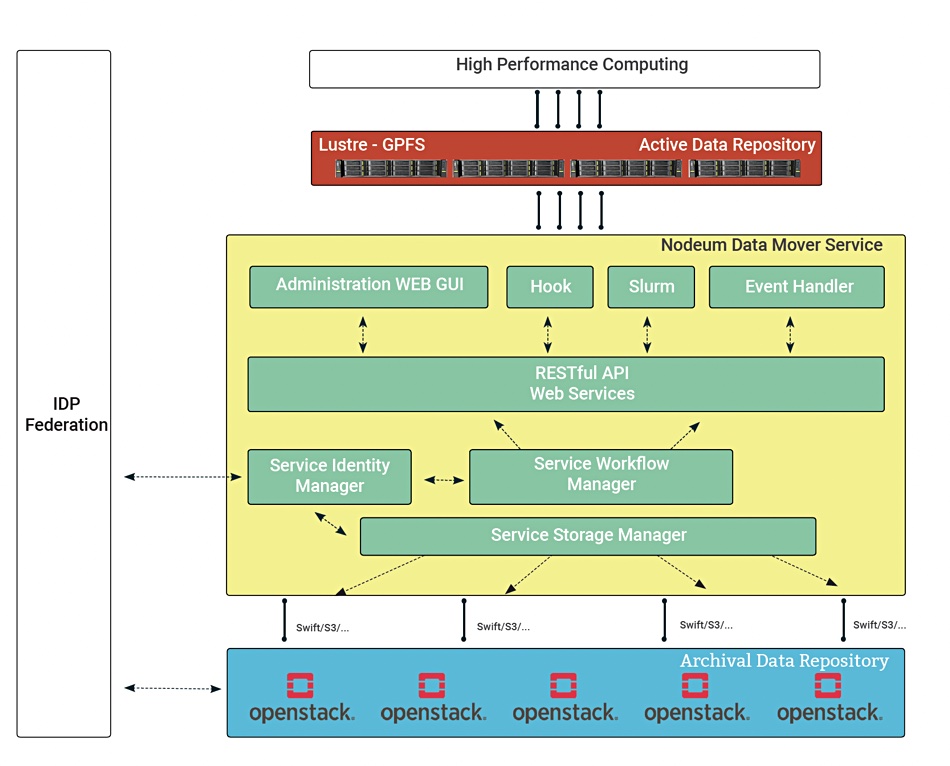Belgium-based Nodeum is a 10-person outfit with its file management software used by 30 customers, including five of the top European high-performance computing centers. How did such a small company achieve this level of influence?
Its software is used to manage the storage of file data, moving it from primary through to secondary (disk) and tertiary (cloud, tape) storage – classic hierarchical file storage lifecycle management in other words. This is an area with well-known suppliers such as Komprise, SpectraLogic (StorCycle), Atempo (Miria), and Quantum (StorNext), yet Nodeum has built up a customer base despite heavyweight competition.

CEO and co-founder Valéry Guilleaume said Nodeum was indeed a small company, with annual revenues around €1 million ($1.1 million).
HPC customers include the Jülich Supercomputing Centre, Barcelona Supercomputing Centre, and the CSCS Swiss National Supercomputing Centre, plus Fenix and its confederation of six European HPC sites in the Human Brain Project research initiative.
They have taken on board Nodeum’s concept of a three-tier archive – immediate access, intermediate access, and a long-term archive pool.
The company was founded in 2015, and launched its first product in 2016. The initial customer in the Germany-Austria-Switzerland (DACH) region was won in 2020, which was also when a UK distribution agreement was set up.
Nodeum has no formal go-to-market organization, being mostly engineers who have built a large-scale, POSIX-compliant file system with dataset retention, metadata, indexation, and data movement capabilities. This system can work with an HPC site’s Lustre and GPFS parallel file system software, and Nodeum understands HPC workflows and use of multiple different file and tape storage supplier’s systems.
As an example, the Fenix system has an automatic data mover migrating objects between active data (parallel file systems) repositories and archival (cloud) data repositories for the federation of six European sites. The Nodeum software handles data transfer between cloud object stores with a Swift interface and fast parallel file systems with POSIX interfaces. It also integrates with Slurm, an HPC workload manager. There is a public API and SDK to facilitate integration with individual research applications.

The current software is being extended with data classification, self-provisioning, and a GUI coming in the second 2024 quarter.
The five European HPC centers became customers in 2021. They and other customers wanted Nodeum to add scalability to higher capacities – exabyte-level – and this is why it has been developing its gen 2 product with a microservices, cloud-native architecture, and an end-to-end parallel design.
Our understanding is that the European HPC scene is a relatively small market niche and its people talk to each other. Information about Nodeum’s capabilities spread by word of mouth.
Other customers include the University of Rostov, Graz Medical University, Akquinet Data Center Services (object storage to tape), MPC Episodic & Film, and a space industry concern in Asia.
Guilleaume said Nodeum was talking to a European bank about a 1 PB object archive, with data being moved from source systems to flash storage. This is, he said, very early days, but it’s an example of how Nodeum’s HPC base is helping to generate sales prospects in adjacent markets.
This quite small European file storage management supplier punches well above its weight in the region’s HPC and allied markets, and it will likely need to build a go-to-market organization if and when its customer numbers head toward and past the 100 count.








